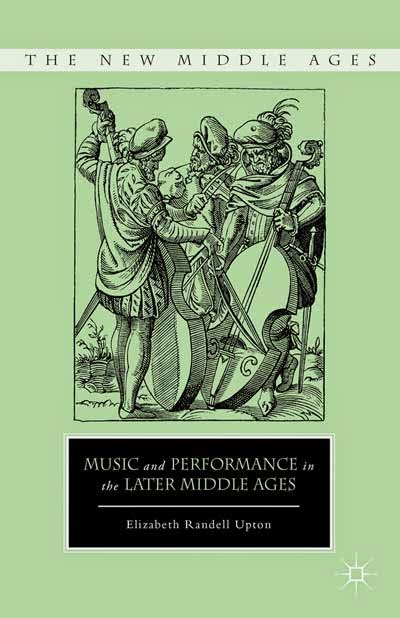Book Review: Rehearing Late Medieval Song
Elizabeth Randell Upton, Music and performance in the later Middle Ages, The New Middle Ages (New York: Palgrave Macmillan, 2012), £61
It seems that a rich, reflective phase of scholarship on
medieval culture is upon us. The medievalist audience at large will
have already detected its presence running through
the series The New Middle Ages, edited by Bonnie Wheeler and published
by Palgrave Macmillan, but readers may be less
aware of how such developments are unfolding in musicological spheres.
In musicology,
the approach of The New Middle Ages shows clear
signs of cross-fertilization with other recent movements such as sound
studies
(see The sound studies reader, ed. J. Sterne (London, 2012)) and the new cultural history of music (see The Oxford handbook of the new cultural history of music,
ed. J. Fulcher (New York, 2011)), resulting in ‘thickly’ descriptive
essays that seek balanced dialogue between positivist
approaches and more interpretive and cultural
sensitivities. That such new work frequently invokes a breathtaking
expanse
of interdisciplinary knowledge is testament to
generations of careful archival excavations and subsequent digitization
projects
that form the bedrock of today’s research. If this
current reflective phase is the first fruit of our brave new
database-driven
world, then it may be useful to view these studies
as the first dividends of some very shrewd online investment by the
academic
community.
Music and performance in the later Middle Ages
by Elizabeth Randell Upton is a good example of such interdisciplinary
richness. Characterized by a subtly provocative stance
delivered through wonderfully lucid and highly
enjoyable prose, it is unquestionably a branch of Palgrave’s New Middle
Ages
family tree. Upton’s overall aim is the
re-examination of two manuscript collections—the Chantilly Codex
(Chantilly, Musée
Condé 564) and the Oxford manuscript (Bodleian
Library, Canon. Misc. 213)—to include the viewpoints of performers and
listeners,
as well as a traditional compositional perspective.
In so doing Upton spins an ornate interdisciplinary …
For the full text of this article please visit:
http://em.oxfordjournals.org/content/early/2014/07/31/em.cau105.extract



Comments
Post a Comment